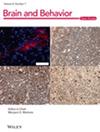Lesion Topography and Clinical Features Associated With Respiratory Failure in Patients With Medullary Infarction
Abstract
Background
Respirator failure (RF) is a severe malignant complication in both lateral medullary infarction (LMI) and medial medullary infarction (MMI) patients. However, the differences in clinical and radiological manifestations associated with RF between patients with LMI and MMI have not been fully elucidated.
Methods
A total of 435 consecutive patients with MI within 7 days of onset in our institute were retrospectively enrolled from January 2017 to January 2024. Lesions were categorized both rostral-caudally and horizontally, and clinical characteristics were collected to evaluate the correlation between them and RF that occurred within 10 days of stroke onset.
Results
Among the 435 patients, 33 patients developed RF, with 19 exhibiting LMI and 12 exhibiting MMI. Multisegment involvement was more common among LMI patients experiencing RF compared to those without (52.6% vs. 23.9%, p = 0.012). However, this difference was not observed among MMI patients. Large (n = 12, 63.2%, p = 0.014) and typical (n = 6, 31.6%, p = 0.016) lesions were more common among LMI patients with RF. In MMI patients with RF, nine (75.0%) patients had long lesions extending from the ventral to the dorsal medulla, with six of these cases involving bilateral lesions, as V-shape or heart-shape on MRI. Univariate analysis of clinical symptoms revealed that bulbar symptoms, urinary retention, and pulmonary infection were significantly more common in both the LMI and MMI groups with RF.
Conclusions
Specific lesion patterns, such as large and typical infarctions in LMI patients or long lesions, particularly those with bilateral infarctions, as V-shape or heart-shape on MRI in MMI patients, appear to correlate with a higher incidence of RF, while clinical symptoms associated with RF are similar in LMI and MMI.


 求助内容:
求助内容: 应助结果提醒方式:
应助结果提醒方式:


